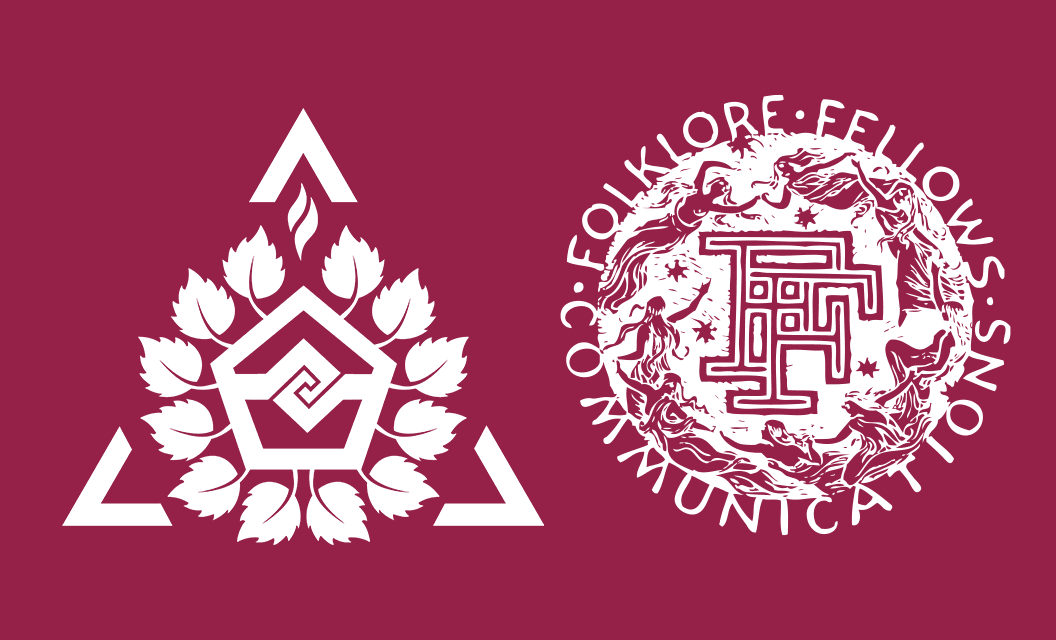Folklore Fellows’ Communications
Folklore Fellows’ Communications
Folklore Fellows är ett forskarnätverk som grundades år 1907. Nätverkets publikationsserie, Folklore Fellows Communications (FFC), började ges ut år 1908. Publikationsserien bekostades av Finska Vetenskapsakademien till år 2020, då Kalevalasällskapet övertog ansvaret för publikationsserien.
På webbplatsen folklorefellows.fi hittar du seriens hela publikationshistoria.
Nyaste bökker
The God Perkūnas of the Ancient Lithuanians in Language, Folklore, and Historical Sources
Nijolė Laurinkienė
The Kalevala Society
Folklore Fellows’ Communications 327
Helsinki 2023
336 pages
ISBN 978-952-9534-08-1
Available at the Tiedekirja bookstore for 36 €
The God Perkūnas of the Ancient Lithuanians is the most thorough and extensive work on the Lithuanian thunder god to date. This book’s nineteen chapters follow the god’s Indo-European origins through the evidence in histories, place names, and diverse forms of folklore, as well as how these relate to archaeological evidence and aspects of material culture.
Nijolė Laurinkienė’s empirically grounded study covers enormous quantities of primary sources in order to offer multidisciplinary perspectives that she situates in both diachronic and synchronic contexts. Laurinkienė considers continuities and reconstructions of the non-Christian religion and elucidates the rich and dynamic variation in the traditions that continued up through the transition into modernity.
The God Perkūnas is a fascinating and valuable work for anyone interested in pre-modern mythologies. The insights offered will be of relevance to researchers in a variety of fields, and the book also presents a wealth of primary sources, many made available in English for the first time, increasing the book’s value as a resource.
Shamanism in Norse Myth and Magic vols I & II (2nd Printing)
Clive Tolley
The Kalevala Society
First published 2009, reprinted with minor corrections and with additions 2023
Helsinki 2023
Folklore Fellows’ Communications 296, Vol. I
613 pages
ISBN 978-952-9534-06-7
Available at the Tiedekirja bookstore, 58 € (The set of vols I & II, 70 €)
Folklore Fellows’ Communications 297, Vol II – Reference Materials
318 pages
ISBN 978-952-9534-07-4
Available at the Tiedekirja bookstore, 28 € (The set of vols I & II, 70 €)
Medieval Norse written sources, ranging from poems originally handed down in oral tradition from pagan times to prose sagas composed in literate Christian Iceland, as well as histories and laws, present acts of magic and initiation, performed both by humans in fictionalised histories and by gods in myths. The summoning of spirits, journeys to the otherworld, the taking of animal shape, and drumming are some of the features of these rites that have prompted many to see in pre-Christian Scandinavian practices some form of shamanism. But what exactly are the features of shamanism that are being compared? And how reliable are the Norse sources in revealing the true nature of pre-Christian practices?
In this study, Clive Tolley presents the main features of Siberian shamanism, as they are relevant for comparison with Norse sources, and examines the Norse texts in detail to determine how far it is reasonable to assign a label of “shamanism” to the human and divine magical practices of pre-Christian Scandinavia, whose existence, it is argued, in many cases resides mainly in the imaginative tradition of the poets.
Types for International Folktales I–III (2nd edition)
Hans-Jörg Uther
The catalogue of international tale types (ATU) based on the system of Aarne/Thompson constitutes a fundamentally new edition with extensive additions and innovations. The descriptions of the tale types have been completely rewritten and made more precise. The essential research cited for each type includes extensive documentation of its international distribution as well as monographic works or articles on that type. More than two hundred and fifty new types have been added. Types with very limited distribution have been omitted. A detailed subject index includes the most important subjects, actions, and other motifs, including actors and settings.
The whole series (I–III) is now available at our newly established Open Access platform edition.fi/kalevalaseura!
The Meanings of Enchantment. Wondertale Symbolism Revisited
Francisco Vaz da Silva
The Kalevala Society Foundation
Folklore Fellows’ Communications 326
Helsinki 2023
218 pages
ISBN 978-952-9534-05-0
Available at the Tiedekirja bookstore, 28 €
Francisco Vaz da Silva’s study posits that the meanings of enchantment can be rationally described, but wondertales need to be elucidated in their own terms, as opposed to bringing preset external theories to bear on the stories.
The argument sets out to reveal the symbolic framework of wondertales as a genre. It underlines the stability of symbolic patterns in tales across space and time, as well as the adaptability of the myriad variants to specific historical settings—hence, the evolution of the texts in tune with their contexts.
Going beyond rigid distinctions of oral vs. literary vs. cinematic retellings, this book shows that the comparison of all sorts of variants is helpful to understand the tales. It would not be wrong to say that it proposes a mental ethnography of the wondertale—a cartography of its symbolic landscape—up to the present day. Along the way, it revisits a number of received ideas (such as the centrality of male protagonists, the inherent victimhood of feminine characters, and the immanent misogyny of the tales) in light of oral retellings and older literary strata of the wondertale tradition.





